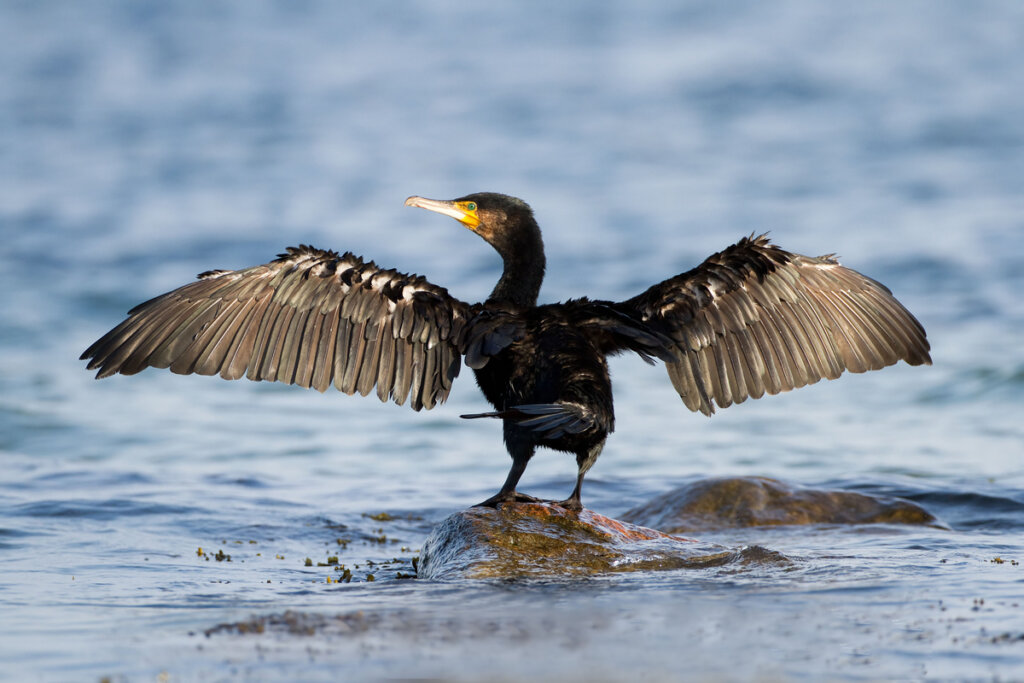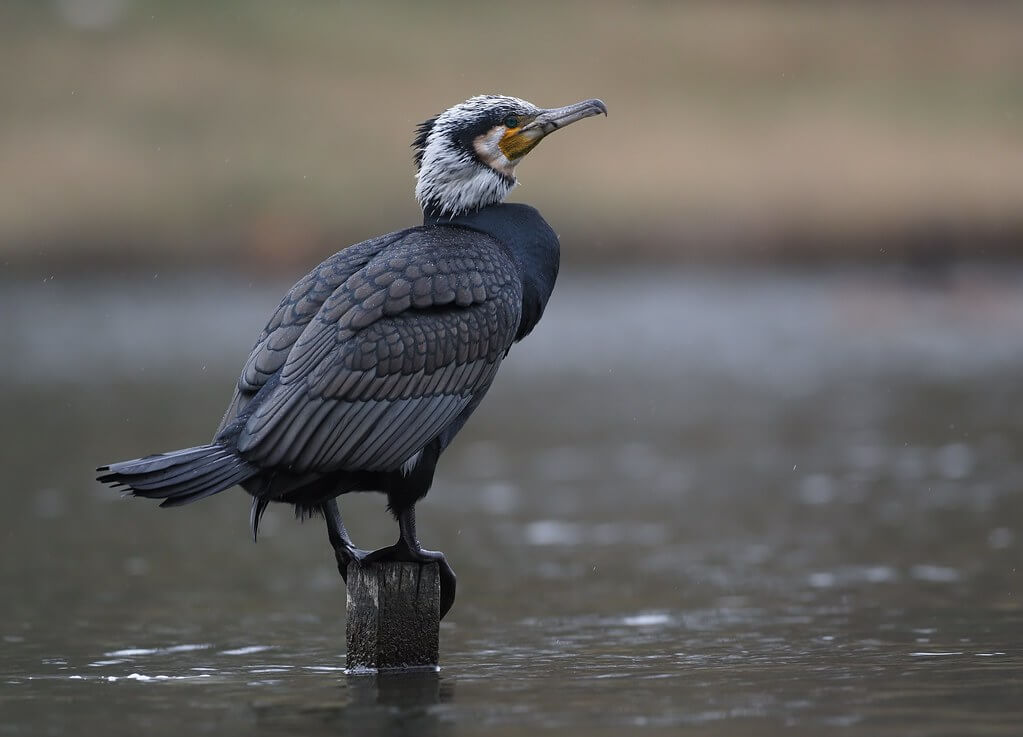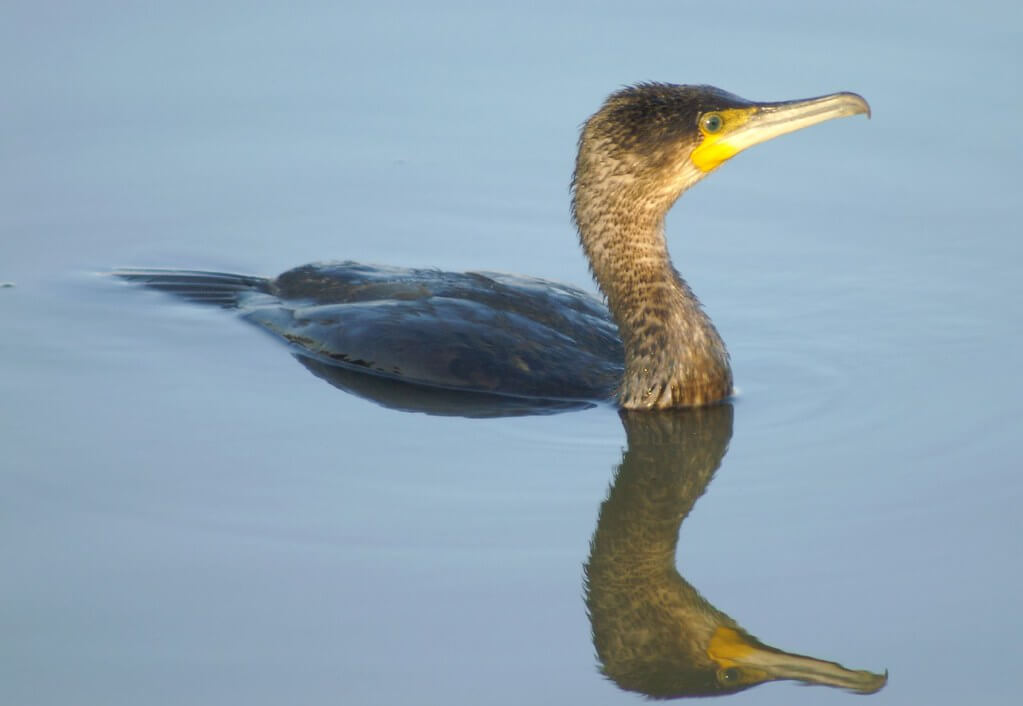Get to Know the Cormorant: Habitat, Characteristics and Reproduction

The cormorant is a fantastic fishing bird that lives in coastal regions and in various bodies of water around the world. Although it’s capable of diving like other aquatic birds, these peculiar species have a unique characteristic that allows them to move better in the water.
The term “cormorant” refers not only to one particular species, but to several that are grouped in the family Phalacrocoracidae. While it’s true that the characteristics vary in each of the specimens, they all exhibit pretty similar colorations and a special plumage. Continue reading to find out more about the cormorant.
Distribution and habitat
Because the term “cormorant” is used to designate several species, it’s difficult to describe its distribution. In fact, if all specimens with this common name are taken into account, it could be said that they’re cosmopolitan. However, there’s greater diversity in tropical and temperate climates.
Also, because they all have certain aquatic habits, they’re restricted to living near bodies of water such as rivers, streams, lakes, and seas. The only requirement is the presence of fish in the environment, as this is the main component of their diet.

Physical characteristics of the cormorant
Cormorants are medium-sized birds with a body length of between 45 and 100 centimeters (18 – 39 inches). They have a long beak and an extending pharyngeal pouch to store their prey. They also have a pair of webbed feet that are very useful for swimming, but are set far back on their bodies, causing them to walk a bit strangely on land.
In terms of coloration, cormorants usually exhibit only two different patterns: a dark color (black or brown) with a metallic sheen all over the body (monochromatic), or a dark upper part with a white lower plumage (bicolor).
Cormorant genera
According to a study published in the scientific journal Molecular Phylogenetics and Evolution there are about 40 species of cormorant around the world. All of them are grouped into 3 different genera:
- Microcarbo phalacrocorax: Also known as the small cormorants. This group contains 5 living species, among which the crowned cormorant and the African cormorant stand out.
- African cormorant: In this genus, we group together the large cormorants that live in the old world. The most representative species is the great cormorant.
- Blue-eyed cormorants: The group usually contains species that are distributed in the southern hemisphere, mainly in America, although there are some species that live in Antarctica and New Zealand.
Behavior
As we already mentioned, these beautiful birds are capable of diving into the water to depths of almost 10 meters (33 feet). This is thanks to two main factors: their powerful webbed feet that propel them and their plumage that is adapted to water, which facilitates immersion. Of course, the cormorant doesn’t rest in the water, but comes out onto land and rests on trees or rocks to dry itself.
Contrary to other semi-aquatic birds, the cormorant doesn’t have waterproof plumage that repels water. However, because its feathers get wet, this bird gains weight and is able to dive deeper, which makes it easier for it to catch prey.
Although the cormorant has glands that secrete a special oil to waterproof its plumage, it’s the structure of its feathers that allows them to get wet. This means that this feature is actually an adaptation that enhances their ability to dive.

Cormorant diet
As can be imagined, cormorants base their diet on fish, although they can sometimes be seen eating other animals such as mollusks, crustaceans, worms, and cephalopods. In general, the diet of most species contains at least 50% fish.
During the hunt, the fish don’t only locate their prey from above, but after they dive they also actively pursue it into the water. As soon as they catch them, they bring them to the surface and swallow them whole. This doesn’t pose any problems for their digestion, as they regurgitate the harder, indigestible parts such as bones and scales.
Reproduction
Cormorant reproduction usually takes place once a year shortly before spring. However, due to their wide distribution and diversity, the timing is likely to vary from species to species. Typically, males perform courtship acts consisting of displaying their wings and plumage in an attempt to entice the female to agree to be their mate.
If the female accepts, both begin to build the nest with different materials found in their habitat. While the male carries all the objects for the construction, the female arranges them until her nest is complete. As soon as they’re finished, the new mother will lay between two and four eggs that will be incubated for a maximum of 35 days.
It’s clear that the cormorant is an amazing bird with fabulous aquatic capabilities. In fact, since the 17th century, some people in Asia tied ropes around their necks to prevent them from swallowing the fish. By doing so, they could get them to fish for them and then take the fish from their mouths, which facilitated their work. This only confirms that people have long recognized the value and skills of the cormorant.
All cited sources were thoroughly reviewed by our team to ensure their quality, reliability, currency, and validity. The bibliography of this article was considered reliable and of academic or scientific accuracy.
- Beike, M. (2012). The history of cormorant fishing in Europe. Vogelwelt, 133(2012), 1-21.
- Ishida, A. (1996). Changes of soil properties in the colonies of the common cormorant, Phalacrocorax carbo. Journal of Forest Research, 1(1), 31-35.
- Velando, A., Alvarez, D., Mourino, J., Arcos, F., & Barros, A. (2005). Population trends and reproductive success of the European shag Phalacrocorax aristotelis on the Iberian Peninsula following the Prestige oil spill. Journal of Ornithology, 146(2), 116-120.
- Grémillet, D., Argentin, G., Schulte, B., & Culik, B. M. (1998). Flexible foraging techniques in breeding Cormorants Phalacrocorax carbo and Shags Phalacrocorax aristotelis: benthic or pelagic feeding?. Ibis, 140(1), 113-119.
- Lack, D. (1945). The ecology of closely related species with special reference to cormorant (Phalacrocorax carbo) and shag (P. aristotelis). The Journal of Animal Ecology, 12-16.
- Kennedy, M., & Spencer, H. G. (2014). Classification of the cormorants of the world. Molecular Phylogenetics and Evolution, 79, 249-257.
